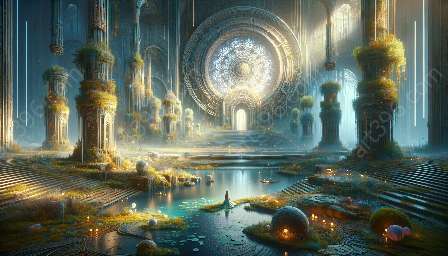Concept design is a crucial stage in the development of products, environments, and characters, and visual art plays a pivotal role in this process. Visual art serves as a fundamental tool for expressing ideas, conveying emotions, and shaping the aesthetics of the concepts being designed.
Understanding Concept Design and its Process
Concept design is a multifaceted discipline that involves generating ideas and translating them into tangible forms. It encompasses various stages, such as research, ideation, sketching, digital rendering, and refinement, ultimately leading to the creation of a comprehensive concept.
Throughout this process, visual art serves as a primary means of communication, allowing designers to visualize their concepts and convey them effectively to stakeholders, clients, and team members. Visual art, in this context, refers to any form of art that is visually perceptible, including traditional mediums such as drawing, painting, and sculpting, as well as digital art and graphic design.
Compatibility with Concept Art
Concept art, a specialized field within concept design, focuses on creating visual representations of ideas, often within the context of entertainment, gaming, film, and other creative industries. Visual art is integral to concept art, as it enables artists to breathe life into imaginative worlds, characters, and narratives.
Concept art utilizes visual storytelling to convey the essence of a concept, whether it's a futuristic cityscape, a mythical creature, or a futuristic vehicle. Artists leverage their skills in visual art to evoke emotions, establish atmospheres, and capture the essence of the envisioned concept.
The Importance of Visual Art in Creating Captivating Concepts
Visual art is essential for creating captivating concepts that resonate with audiences and stakeholders. It enables designers and artists to explore diverse visual styles, experiment with color palettes, and define the visual identity of the concepts they develop. Through visual art, concepts are brought to life, fostering immersive and engaging experiences for viewers and users.
By leveraging the power of visual storytelling, concept designers and artists can convey complex narratives, evoke empathy, and spur imagination. Visual art adds depth and richness to concepts, making them compelling and memorable.
Conclusion
In conclusion, visual art serves as a cornerstone of concept design, enriching the process with creativity, expression, and visual communication. Its compatibility with the concept design process and concept art underscores its significance in shaping innovative and impactful concepts. By embracing visual art, designers and artists can unleash the full potential of their imaginations, bringing forth concepts that inspire, intrigue, and captivate.

